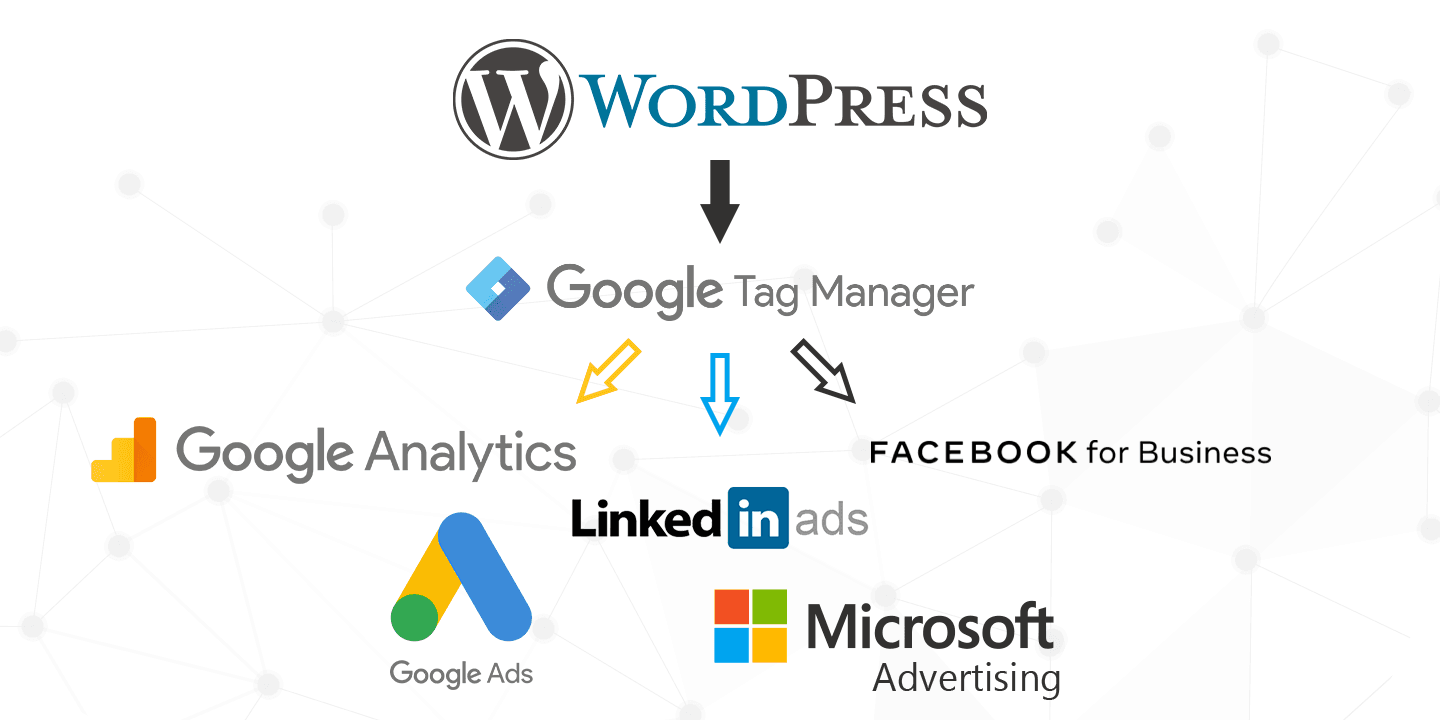As a B2B SaaS marketer, you are expected to drive growth despite the current macroeconomic conditions like layoffs, inflation, and restrictive monetary policies. The key to success lies in efficiency and data-driven decision making. To achieve this, it’s crucial to build a strong first-party data framework that enables you to collect, analyze, and act on data, and to do that you need to start with a measurement plan.
For B2B Saas Marketers, efficiency means making data based decisions quickly. To do this, you will need to ensure you’re able to collect, analyze, and act on our data to make the best, most informed decisions. And that all starts by building a first-party data framework.
Google’s research shows that companies can link first-party data sources, they generate 150% revenue from a single ad placement and cut costs in half compared to companies with limited data integration. This highlights the importance of building a first-party data strategy, not just for better business performance but also for governance, risk, and compliance reasons.
Despite the macro economic hard times, marketers are expected to find ways to push through, and lead the way.
The writing is on the wall – you need to build a first-party data strategy, purely for the governance, risk, and compliance reasons, let alone business performance improvements. Retail is particularly affected, but B2B SaaS will need to make the shift or be left behind. So what are the steps?
Build a Strong Tagging Foundation
To collect high quality first-party data, you need to have a foundation that is easy enough for you to build without relying on external specialists or engineers, flexible enough to account for your unique tech stack, and agile enough to continuously update. There are a handful of solutions that do this, but I recommend starting with Google Tag Manager. It’s the leading solution for marketers. It offers a broad range of integrations, and is flexible enough to power highly advanced and complex tagging systems.
Google Tag Manager combined with Google Analytics 4 is a great combination to build your foundation because it also enables you to respect user consent. Establishing and maintaining trust is of course very important, but mitigating risks of non-compliance to international standards such as ISO and GDPR is also very important. You don’t want your CEO or legal team dropping messages to you about non-compliance.
Data Accuracy is Key
If you end up doing a wonderful, insightful analysis on your data and then build strategies and tactics to act on it, only to find out that the data was wrong, is just heart-breaking.
Your measurement plan should also include how you validate your data collection so that you can verify it’s accuracy. Otherwise, you won’t be able to trust your analysis and recommendations, and neither will anyone else.
You’ll need to balance the use of cookies and identifiers and user consent, and fully understand where the gaps are. It’s not bad to have gaps, but it’s bad to have gaps and not know you have gaps. Conversion modeling can help provide insight into otherwise unobserved conversion.
The single biggest change to Google Analytics 4 from it’s predecessor Universal Analytics is that the data collection model moved from Sessions based to Events based. This gives you a lot more flexibility in tracking user engagements and interactions.
Events tracking comes out of the box, but you will need to spend the time defining, setting up, and validating the events that matter most in your unique customer journey. You can view Googles list of recommended events, segmented by online sales, for games, or for all properties.
Clearly Defined Goals and KPIs
Start by establishing what success looks like for your business, what you want to achieve with your SaaS product, and what metrics you need to track to measure progress. Common KPIs for SaaS businesses include customer acquisition cost (CAC), monthly recurring revenue (MRR), churn rate, and lifetime value (LTV). Make sure your goals are specific, measurable, attainable, relevant, and time-bound (SMART).
Implement Tracking and Analytics Tools
To effectively measure your performance, you need the right tools. Consider using analytics platforms such as Google Analytics, Mixpanel, or Amplitude to track website and app usage, customer behavior, and key performance metrics. Additionally, you can use customer relationship management (CRM) software like Salesforce to manage your sales pipeline and customer interactions.
Analyze Data Regularly
Regular analysis of data is critical to understanding the impact of your SaaS product and marketing efforts. You can outline a schedule of what certain data should be analyzed in your measurement plan – weekly, monthly, quarterly, bi-annually, and yearly. This can include all types of metrics that you collect such as changes to the user experience, website design, marketing campaigns, product features, etc. It’s important to track progress regularly and adjust your approach as needed.
Conduct Surveys and Customer Research
Feedback from your customers is a valuable resource for understanding how well your SaaS product is performing and identifying areas for improvement. Consider conducting surveys, customer interviews, and focus groups to gather insights. You can also use customer service and support data to understand what issues your customers are facing and how you can address them.
Measure the Impact of Marketing Efforts on the Sales Pipeline
Measuring the impact of your marketing efforts on the sales pipeline is crucial to understanding the return on investment (ROI) of your marketing spend. Track the number of leads generated from each marketing campaign, the conversion rate from lead to customer, and the average time it takes for a customer to make a purchase. This data can help you understand which marketing channels are driving the most value for your business and where to allocate resources.
Examine Product Usage and Engagement Data
To ensure that your SaaS product is meeting the needs of your customers, it’s important to track usage and engagement data. This can include the number of active users, the frequency of use, and the average session length. This data can help you understand how well your product is resonating with your customers and where to focus your product development efforts.
Continuously Test and Refine your Approach
Finally, it’s important to continuously test and refine your approach to ensure that your SaaS product and marketing efforts are having maximum impact. Consider A/B testing different marketing campaigns, product features, and user experiences to determine what resonates best with your customers. Use the insights and data you gather to continuously improve your approach and drive growth for your business.
Build Your Measurement Plan Today
Privacy concerns will continue to rise, user needs will continue to grow, data collection will continue to be needed. With the right planning, tools, and measurement plan, you can at least be ready to act on the right data.
A successful B2B SaaS measurement plan should focus on defining clear goals and KPIs, implementing tracking and analytics tools, regularly analyzing data, gathering customer feedback, measuring the impact of marketing efforts, tracking product usage and engagement data, and continuously testing and refining your approach. By taking these steps, you can better understand the performance of your SaaS product and marketing efforts, drive growth for your business, and ensure a strong return on investment.




6 Responses
Should refer to the Data Accuracy section of the Data Management Association’s Data Management Body of Knowledge (DMBOK) for guidance on validating data sources, detecting errors, and addressing biases.
I wasn’t aware of that certification course. Took a quick look and wasn’t able to find information about data accuracy from their DMBOK, but it looks like it’s all behind a paid wall.
Marketers like to jump onto new trends but forget the bigger picture.
Yeah, that can happen, which is not always a bad thing. Sometimes it’s very beneficial to get onto a trend early, and sometimes it’s not.
Love the call on data accuracy. Validating data collection is a good step, but a waste of money and time if the process is not including sales engagement with the prospect.
Agree, sales engagement is very important. Just yesterday I was attending a BC Tech CMO knowledge share and there were some really good ideas around collecting user engagement data to feed sales engagement.